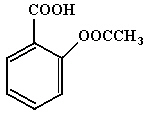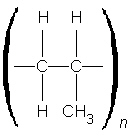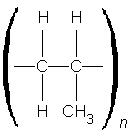Multiple Choice
Identify the
choice that best completes the statement or answers the question.
|
|
|
1.
|
What is a liquid’s flashpoint?
a. | the temperature at which it boils | c. | the temperature at which it emits
light | b. | the temperature at which it will burn | d. | none of the
above |
|
|
|
2.
|
 To which organic group does the above molecule
belong? a. | alcohols | c. | ketones | b. | aldehydes | d. | carboxylic
acids |
|
|
|
3.
|
Which of the following are characteristics of a carboxylic acid?
a. | sour taste | c. | has a pH<7 | b. | produces bubbles with baking
soda | d. | all of the
above |
|
|
|
4.
|
Which functional group(s) is/are found in carboxylic acids?
a. | amide group | c. | carboxyl group | b. | –O– group | d. | all of the
above |
|
|
|
5.
|
What is the common name for methanoic acid?
a. | vinegar | c. | vitamin C | b. | formic acid | d. | none of the
above |
|
|
|
6.
|
 What is the IUPAC name for the above compound? a. | ethyl hexane | c. | pentyl ethanoate | b. | ethyl pentanoate | d. | none of the
above |
|
|
|
7.
|
What is the IUPAC name for
CH3CH2CH2NH2
a. | aminopropane | c. | amino propanoate | b. | propylamine | d. | none of the
above |
|
|
|
8.
|
 A polymer has the structure shown above. Which of the
following is true? a. | it is an addition polymer | b. | it is a condensation
polymer | c. | it is commonly known as polyester | d. | none of the
above |
|
|
|
9.
|
 Which of the following monomers could be used to produce
the above polymer? a. |  | c. |  | b. |  | d. | none of the
above |
|
|
|
10.
|
Which of the following is not a property of plastics?
a. | are generally flexible | b. | are relatively unreactive | c. | become more flexible
when heated | d. | are less rigid the more crosslinks there are |
|
|
|
11.
|
Which of the following plastics was used in hard contact lenses beginning in the
1970s?
a. | 2-hydroxyethylmethylacrylate | c. | cellulose acetate
butyrate | b. | polymethylmethacrylate | d. | none of the above |
|
|
|
12.
|
Which organic group does vitamin C belong to?
a. | alcohols | c. | ketones | b. | aldehydes | d. | carboxylic
acids |
|
|
|
13.
|
An esterification reaction can also be classified as a(n)
a. | combustion | c. | condensation reaction | b. | addition
reaction | d. | hydrolysis |
|
|
|
14.
|
What type of reaction produces soap?
a. | combustion | c. | condensation | b. | addition | d. | hydrolysis |
|
|
|
15.
|
Which group of organic compounds is responsible for fishy smells?
a. | amines | c. | alcohols | b. | carboxylic acids | d. | ketones |
|
|
|
16.
|
What is the general formula for an amide?
|
|
|
17.
|
Which organic family can be used, along with alcohols, to form polyester?
a. | ethers | c. | aldehydes | b. | ketones | d. | carboxylic
acids |
|
|
|
18.
|
A substance smells like bananas. Which organic family does it belong to?
a. | amines | c. | ketones | b. | esters | d. | carboxylic
acids |
|
|
|
19.
|
What is required to produce an ester?
a. | alcohols | c. | acid catalyst | b. | carboxylic acids | d. | all of the
above |
|
|
|
20.
|
Which of the following compounds would have the highest melting point?
a. | ethanol | c. | ethylamine | b. | ethanal | d. | ethane |
|